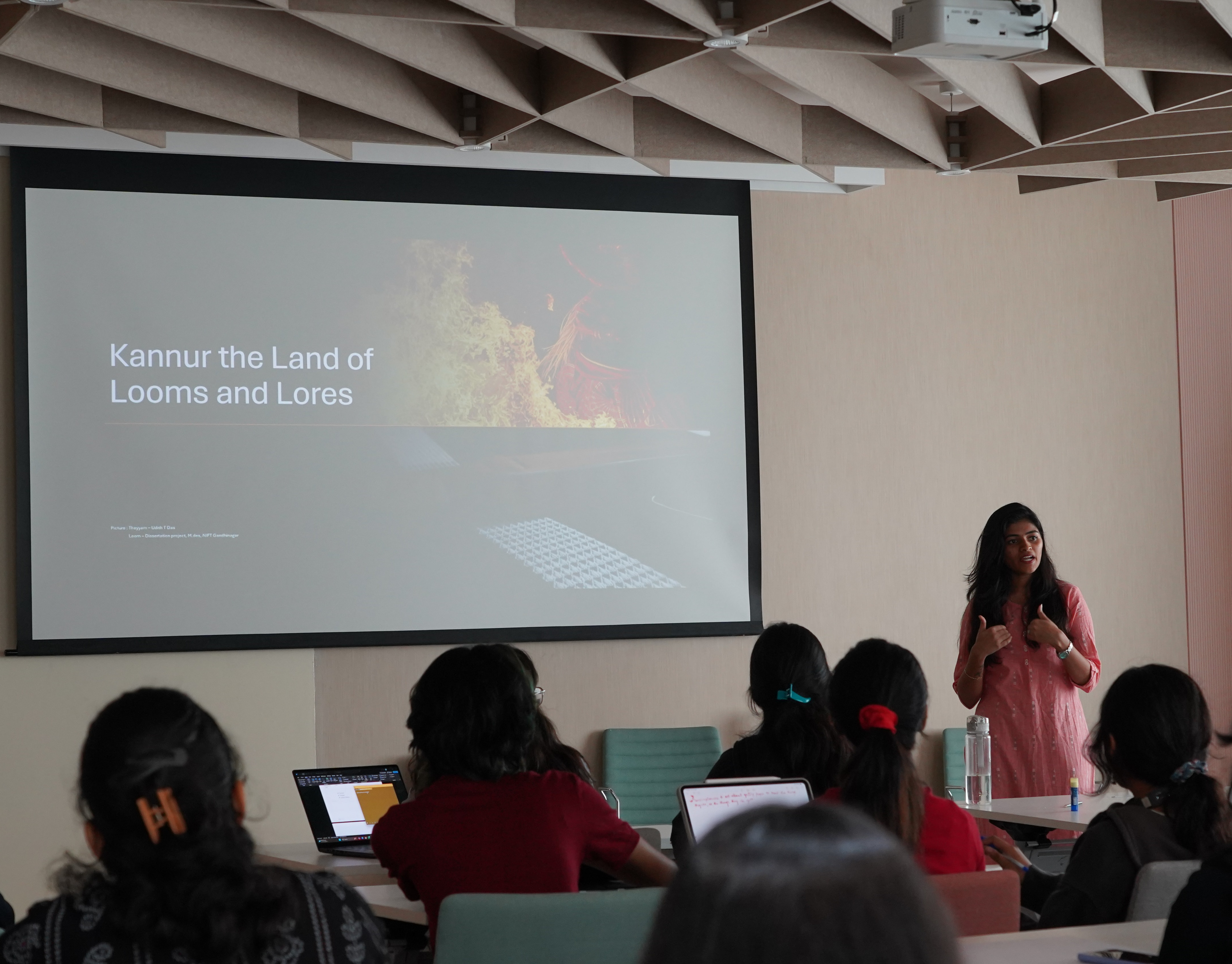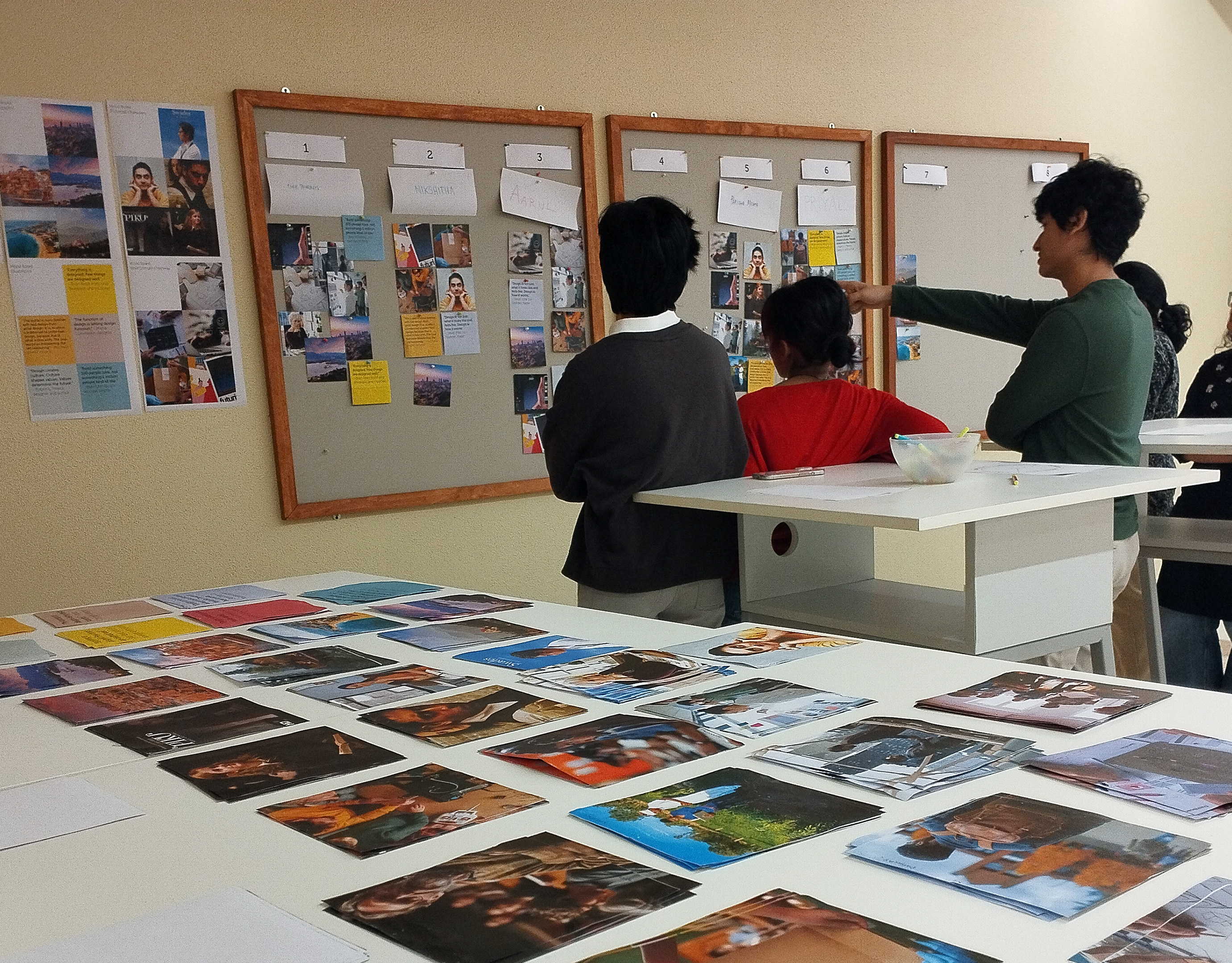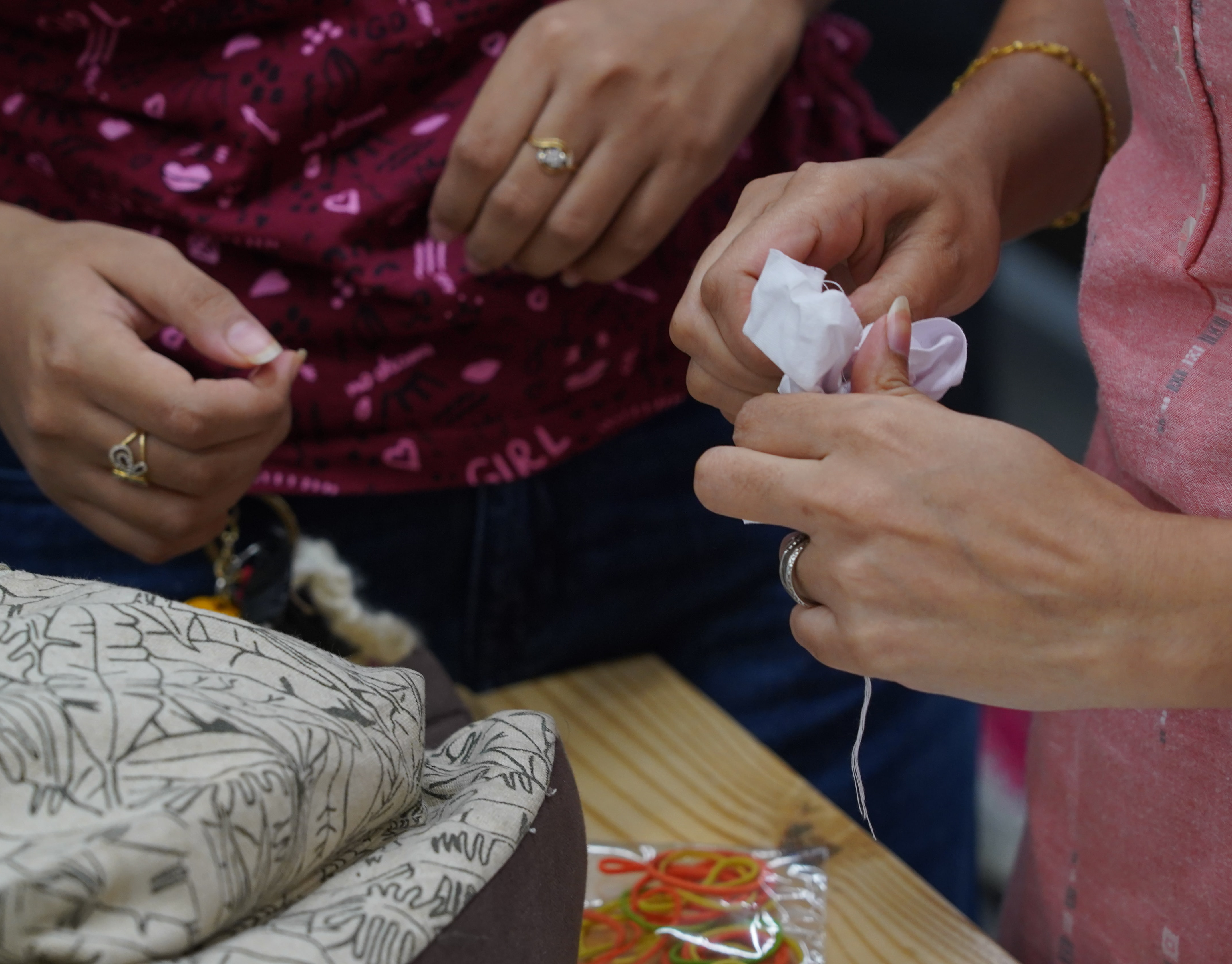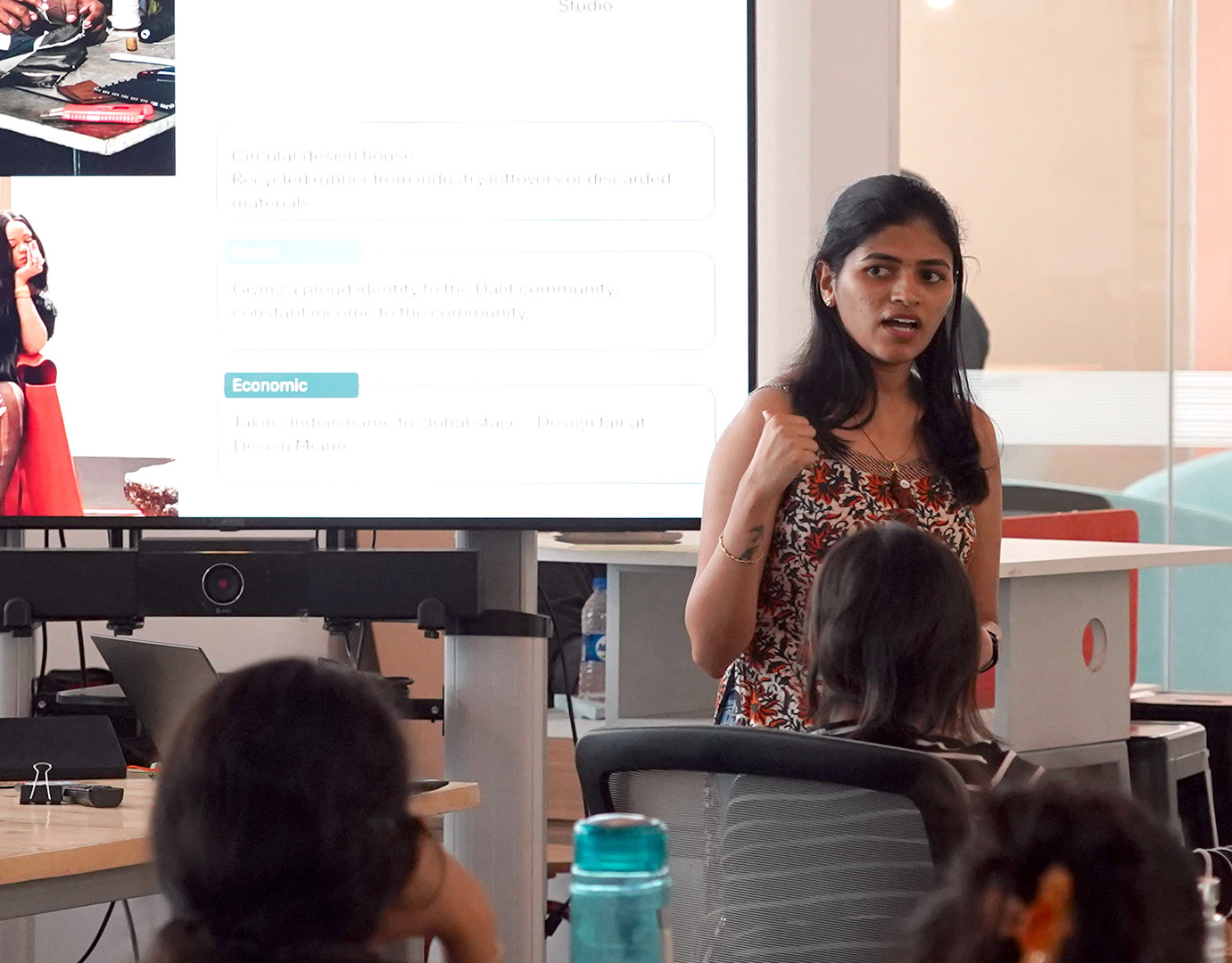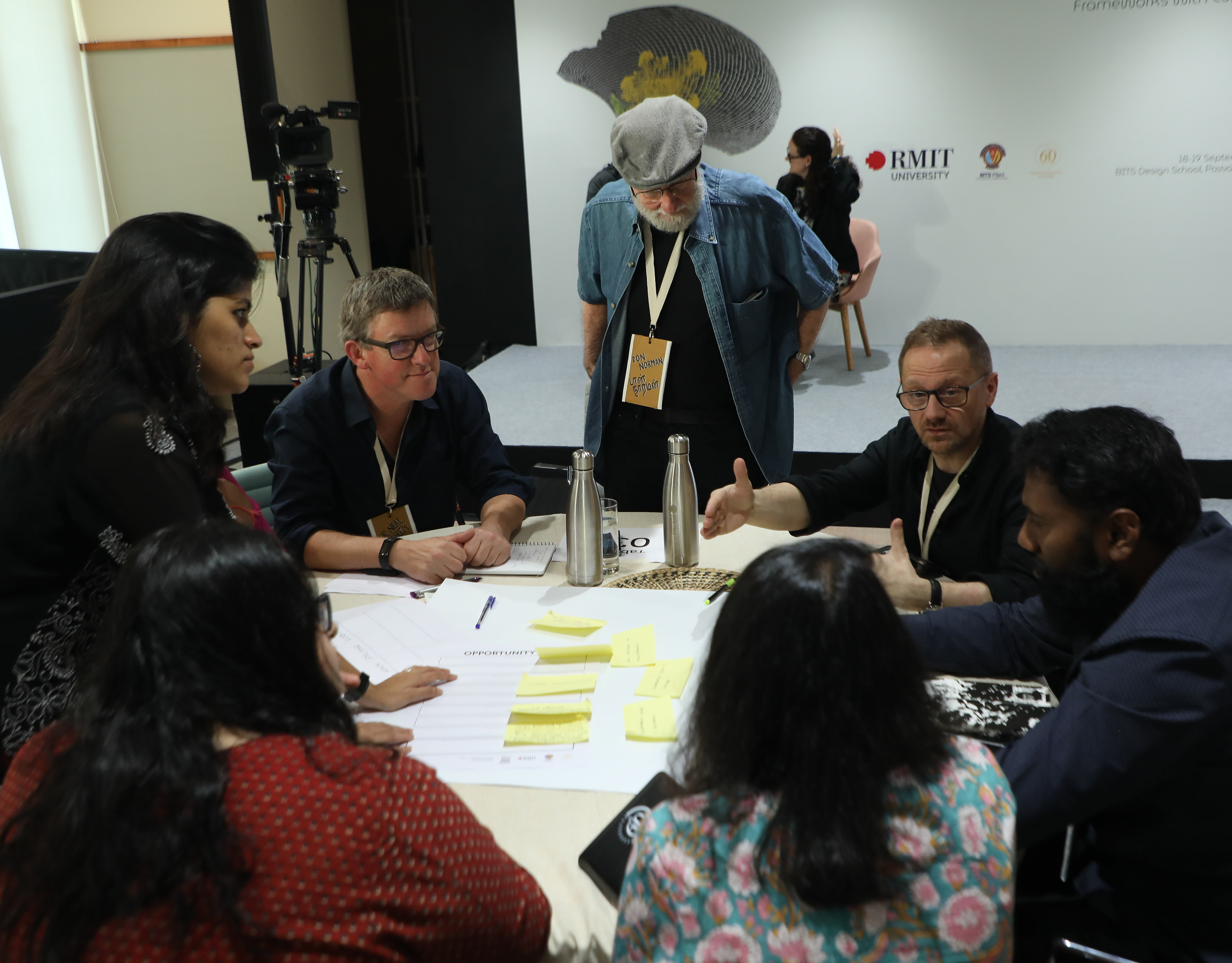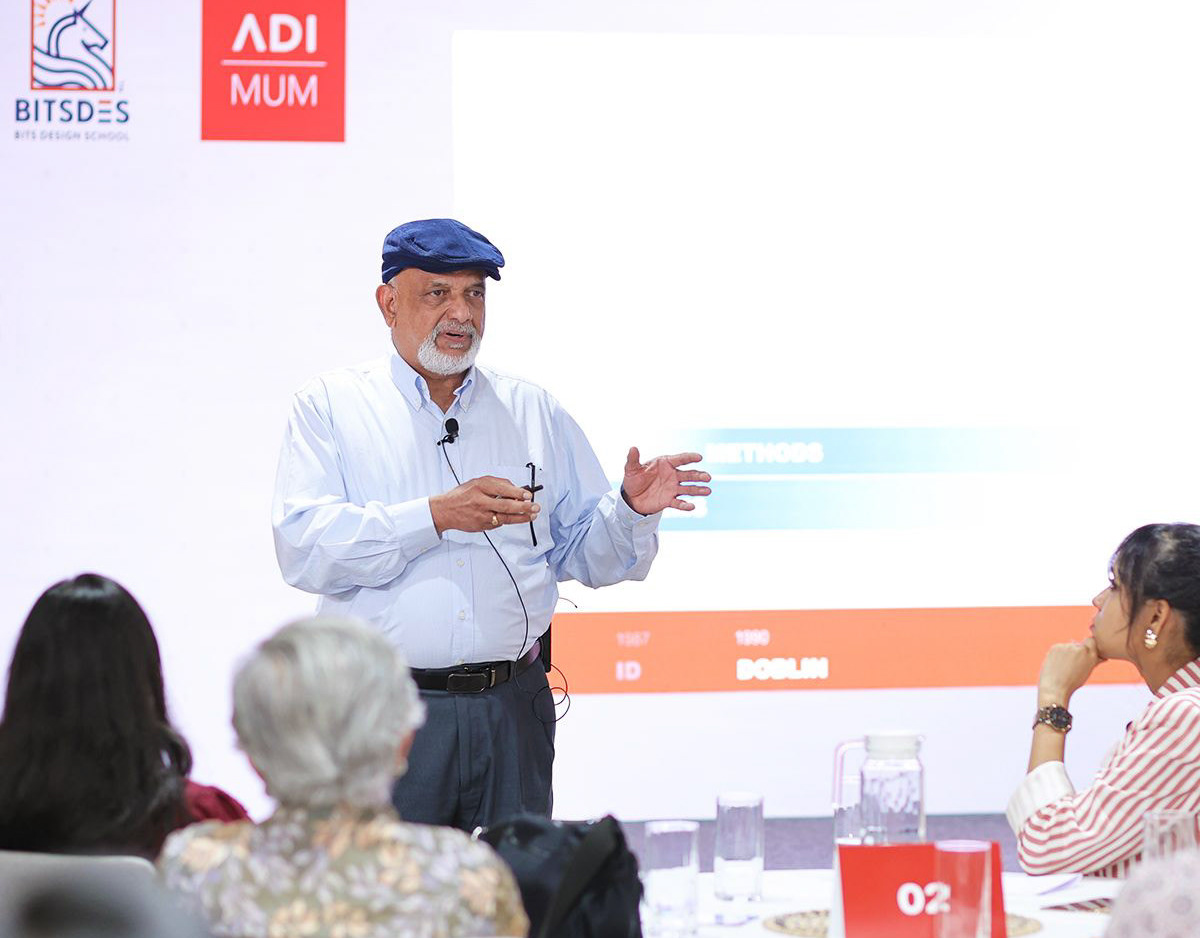
• Type: Lift-off
• Title: Ctrl+Alt+Create (Speculative Design)
• Academic Semester: Bachelor of Design, Semester 2, Academic Year 2024-25
• Engagement of Akshaya: Co-designed and co-curated the experience, as an Academic Fellow, with 5 other Academic Fellows.
• Batch: 4 Sections (140 Students)
• Period / Date: January 6, 2025 - January 10, 2025
• Organization: BITS Design School, BITS Pilani, Mumbai
• Title: Ctrl+Alt+Create (Speculative Design)
• Academic Semester: Bachelor of Design, Semester 2, Academic Year 2024-25
• Engagement of Akshaya: Co-designed and co-curated the experience, as an Academic Fellow, with 5 other Academic Fellows.
• Batch: 4 Sections (140 Students)
• Period / Date: January 6, 2025 - January 10, 2025
• Organization: BITS Design School, BITS Pilani, Mumbai
OVERVIEW
A Lift-off week titled "Ctrl+Alt+Create" for a new academic semester at BITS Design School Mumbai. The Lift-off week was themed on futuristic/speculative design, with (1) a few hands-on workshops by external experts, (2) a hackathon titled "Makeathon" followed up by an exhibition, and (2) guest lectures on the theme, which was a week-long engagement.
A Lift-off week titled "Ctrl+Alt+Create" for a new academic semester at BITS Design School Mumbai. The Lift-off week was themed on futuristic/speculative design, with (1) a few hands-on workshops by external experts, (2) a hackathon titled "Makeathon" followed up by an exhibition, and (2) guest lectures on the theme, which was a week-long engagement.
PROCESS
The planning/designing process for "Ctrl+Alt+Create" involved strategic coordination to deliver a cohesive week-long engagement on futuristic and speculative design. It began with defining the theme and objectives to align the activities with academic goals.
The planning/designing process for "Ctrl+Alt+Create" involved strategic coordination to deliver a cohesive week-long engagement on futuristic and speculative design. It began with defining the theme and objectives to align the activities with academic goals.
The team identified and invited external experts to conduct hands-on workshops, ensuring a mix of design, technology, and future studies perspectives.
The Makeathon was structured to encourage interdisciplinary collaboration, with mentors and facilitators briefed on guiding speculative design methodologies. The exhibition was planned to showcase the outcomes of the hackathon, requiring logistical arrangements for display spaces and presentation formats.
Guest lectures were curated to provide critical insights and provoke dialogue on speculative futures. A detailed schedule was created to balance active participation and reflective sessions. Coordination with faculty, student volunteers, and external participants ensured smooth execution, while feedback loops were established to evaluate engagement and learning outcomes.
FLOW OF ACTIVITIES
Day 1 includes workshops on motion design, and other future-focused skills, equipping participants to think beyond the present. On subsequent days, students will form interest-based groups to create quick prototypes of their ideas, ranging from performances to digital experiences and physical models.
Day 1 includes workshops on motion design, and other future-focused skills, equipping participants to think beyond the present. On subsequent days, students will form interest-based groups to create quick prototypes of their ideas, ranging from performances to digital experiences and physical models.
1. Semester and lift-off week introduction

2. Workshops
Artificial Intelligence
Ninaad Kothawade, Creative Director at NFT Asia, Designer, and Artist - conducted a session on design, technology, and creative exploration. Drawing from his experience in 3D modeling, AI, and digital media, he discussed the relevance of having a multidisciplinary approach. Emphasising on the role of curiosity in a designer’s journey whilst embracing uncertainty, Ninaad encouraged students to bring fresh perspectives to contribute to the evolving design landscape. The overall session gave students a broader understanding of design thinking, beyond traditional boundaries.
Ninaad Kothawade, Creative Director at NFT Asia, Designer, and Artist - conducted a session on design, technology, and creative exploration. Drawing from his experience in 3D modeling, AI, and digital media, he discussed the relevance of having a multidisciplinary approach. Emphasising on the role of curiosity in a designer’s journey whilst embracing uncertainty, Ninaad encouraged students to bring fresh perspectives to contribute to the evolving design landscape. The overall session gave students a broader understanding of design thinking, beyond traditional boundaries.
Sustainable Fashion
Adrien Yakimov Roberts, Co-founder and Director, Elucidation - discussed sustainability in fashion, focusing on its role in shaping future design practices. The session also included a collaborative workshop where students explored costume design by reimagining the classic story of "Romeo and Juliet." Adrien encouraged students to incorporate diverse cultural backdrops and visual narratives into their work.
Adrien Yakimov Roberts, Co-founder and Director, Elucidation - discussed sustainability in fashion, focusing on its role in shaping future design practices. The session also included a collaborative workshop where students explored costume design by reimagining the classic story of "Romeo and Juliet." Adrien encouraged students to incorporate diverse cultural backdrops and visual narratives into their work.
Instruments Making
Kavish Seth, Independent Singer, Songwriter and Inventor, and Parvindar Singh, Musician, Instrument Maker, and Founder at Swarlay - worked with students to design and build musical instruments. The session focused on how materials shape sound and how craftsmanship influences music-making. Students experimented with different ideas, leading to discussions on creativity and the process of making music. Kavish found their ideas engaging and looks forward to more such sessions.
Kavish Seth, Independent Singer, Songwriter and Inventor, and Parvindar Singh, Musician, Instrument Maker, and Founder at Swarlay - worked with students to design and build musical instruments. The session focused on how materials shape sound and how craftsmanship influences music-making. Students experimented with different ideas, leading to discussions on creativity and the process of making music. Kavish found their ideas engaging and looks forward to more such sessions.
Origami
Himanshu Agrawal, Origami Artist, Founder at Orukami - discussed art as a medium for self-expression and the role of design thinking in solving real-world challenges. He showcased the potential of emerging technologies, guiding students to think innovatively and apply their learning in transformative ways. The session encouraged participants to embrace originality and focus on creating impactful designs.
Himanshu Agrawal, Origami Artist, Founder at Orukami - discussed art as a medium for self-expression and the role of design thinking in solving real-world challenges. He showcased the potential of emerging technologies, guiding students to think innovatively and apply their learning in transformative ways. The session encouraged participants to embrace originality and focus on creating impactful designs.
Digital Art
Dhruva Deshpande, Design and Motion Specialist - conducted a workshop centered on integrating emotions and purpose into motion design rather than relying on trends. Dhruva guided participants on adding motion that enhances meaning, rather than creating visuals for aesthetic appeal alone. His approach aimed to inspire curiosity, offering fresh perspectives and insights into creating impactful and thoughtful design outputs.
Dhruva Deshpande, Design and Motion Specialist - conducted a workshop centered on integrating emotions and purpose into motion design rather than relying on trends. Dhruva guided participants on adding motion that enhances meaning, rather than creating visuals for aesthetic appeal alone. His approach aimed to inspire curiosity, offering fresh perspectives and insights into creating impactful and thoughtful design outputs.












3. Hackathon (name "Makeathon")
Students explored future-oriented design scenarios to address complex social, technological, and environmental challenges. Unlike traditional hackathons focused solely on functional prototypes, this "Makeathon" encouraged participants to envision and create speculative artifacts, systems, and narratives that challenge current assumptions and propose alternative futures.
Students explored future-oriented design scenarios to address complex social, technological, and environmental challenges. Unlike traditional hackathons focused solely on functional prototypes, this "Makeathon" encouraged participants to envision and create speculative artifacts, systems, and narratives that challenge current assumptions and propose alternative futures.







4. Exhibition
Student groups presented their work from the Workshops and "Makeathon" in the form of an Exhibition, where guests from industry and academia were invited to discuss and give feedback to students.
Student groups presented their work from the Workshops and "Makeathon" in the form of an Exhibition, where guests from industry and academia were invited to discuss and give feedback to students.
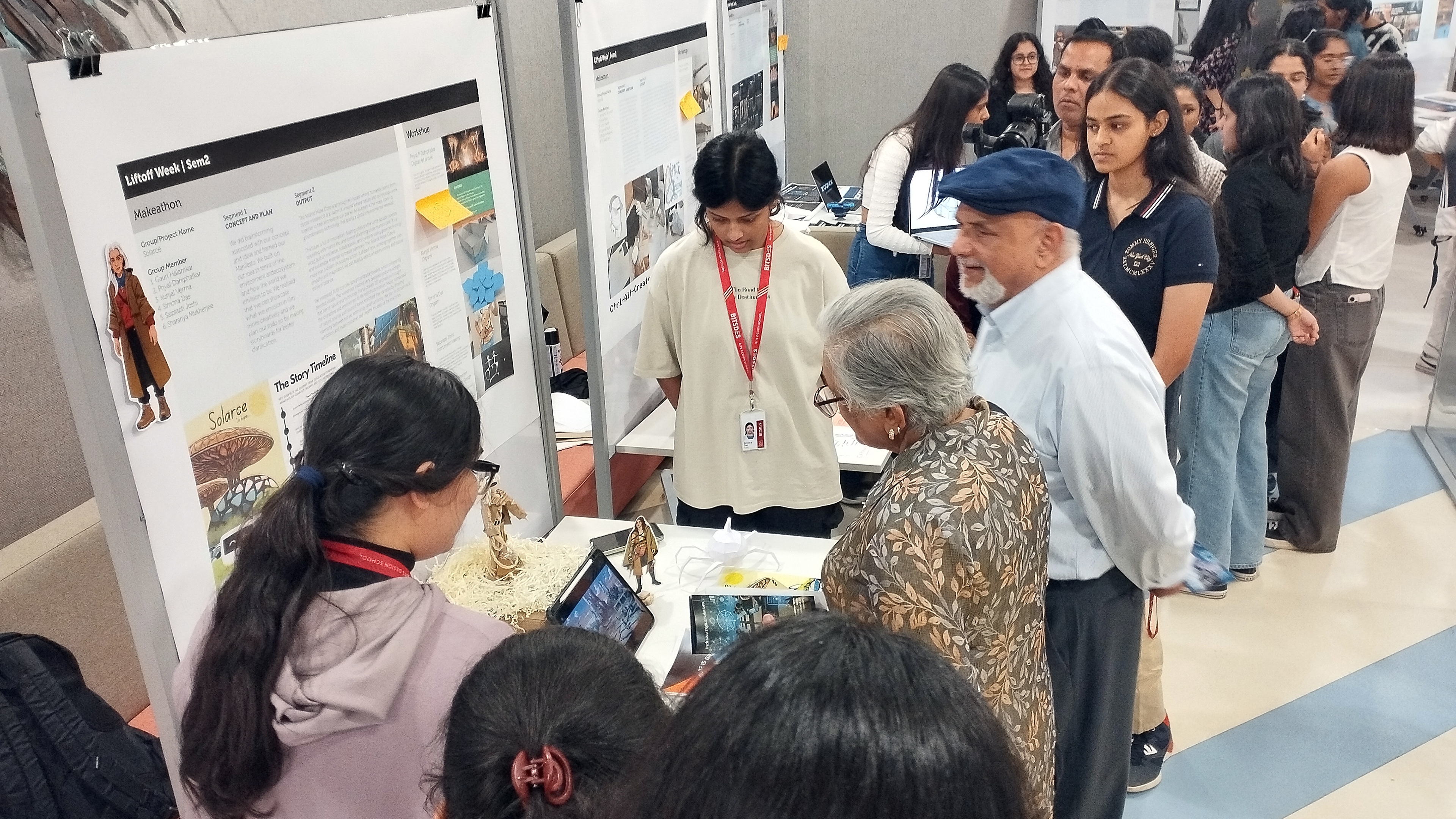

5. Guest Lecture
Vijay Kumar, Professor Emeritus and the Charles L. Owen Endowed Chair in Design at the Illinois Institute of Technology’s Institute of Design, facilitated an academic session between Vijay Kumar and students of BITS Design School. He shared his perspectives on addressing complex challenges through design. He emphasised on methodical, human-centric approaches to innovation in areas such as city planning, public health, and policy-making. Further, Prapti Jha and Harsh Wardhan, associates of Vijay Kumar, facilitated another academic session titled "AI & Design: A Tectonic Shift".
Vijay Kumar, Professor Emeritus and the Charles L. Owen Endowed Chair in Design at the Illinois Institute of Technology’s Institute of Design, facilitated an academic session between Vijay Kumar and students of BITS Design School. He shared his perspectives on addressing complex challenges through design. He emphasised on methodical, human-centric approaches to innovation in areas such as city planning, public health, and policy-making. Further, Prapti Jha and Harsh Wardhan, associates of Vijay Kumar, facilitated another academic session titled "AI & Design: A Tectonic Shift".
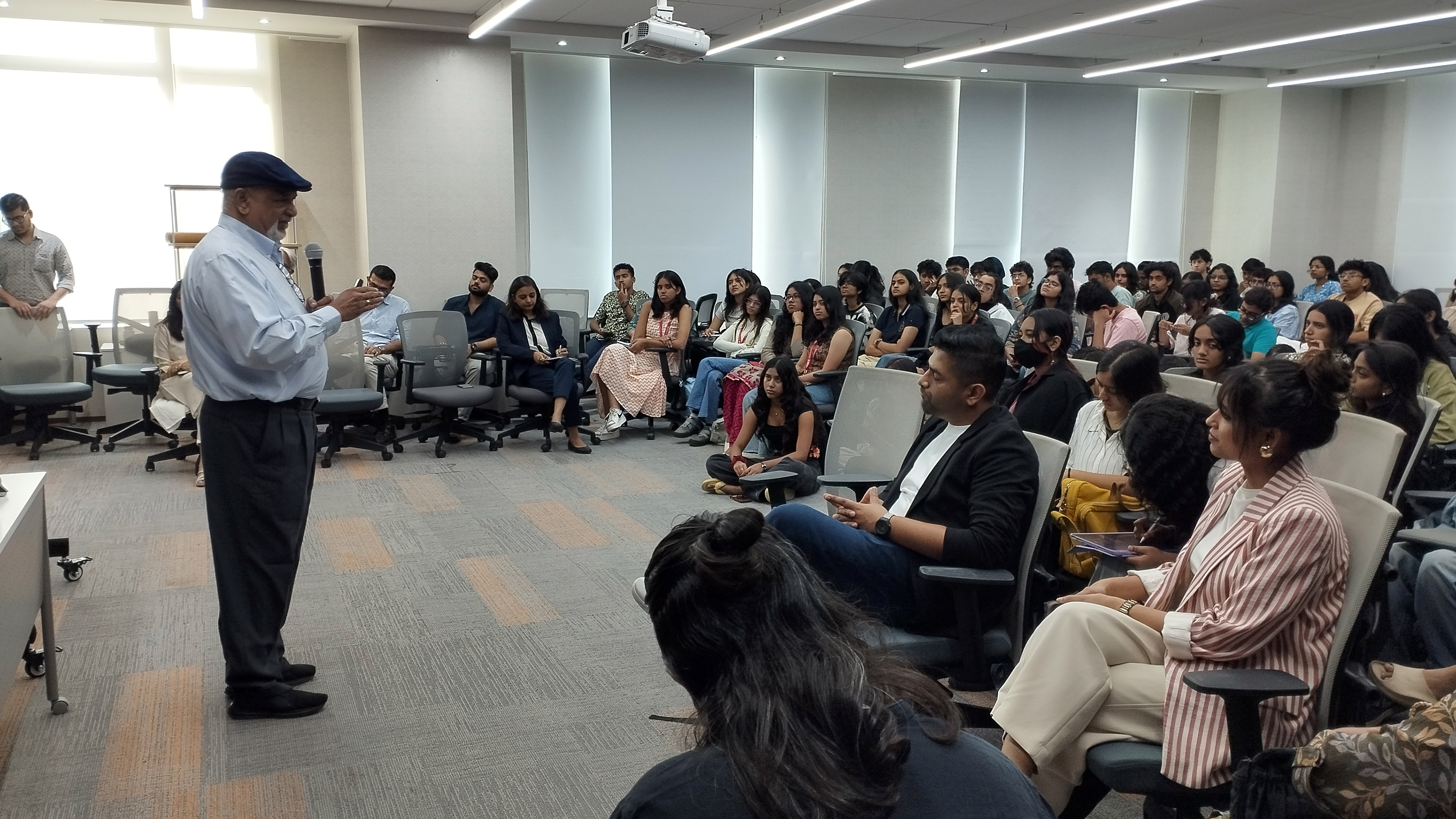
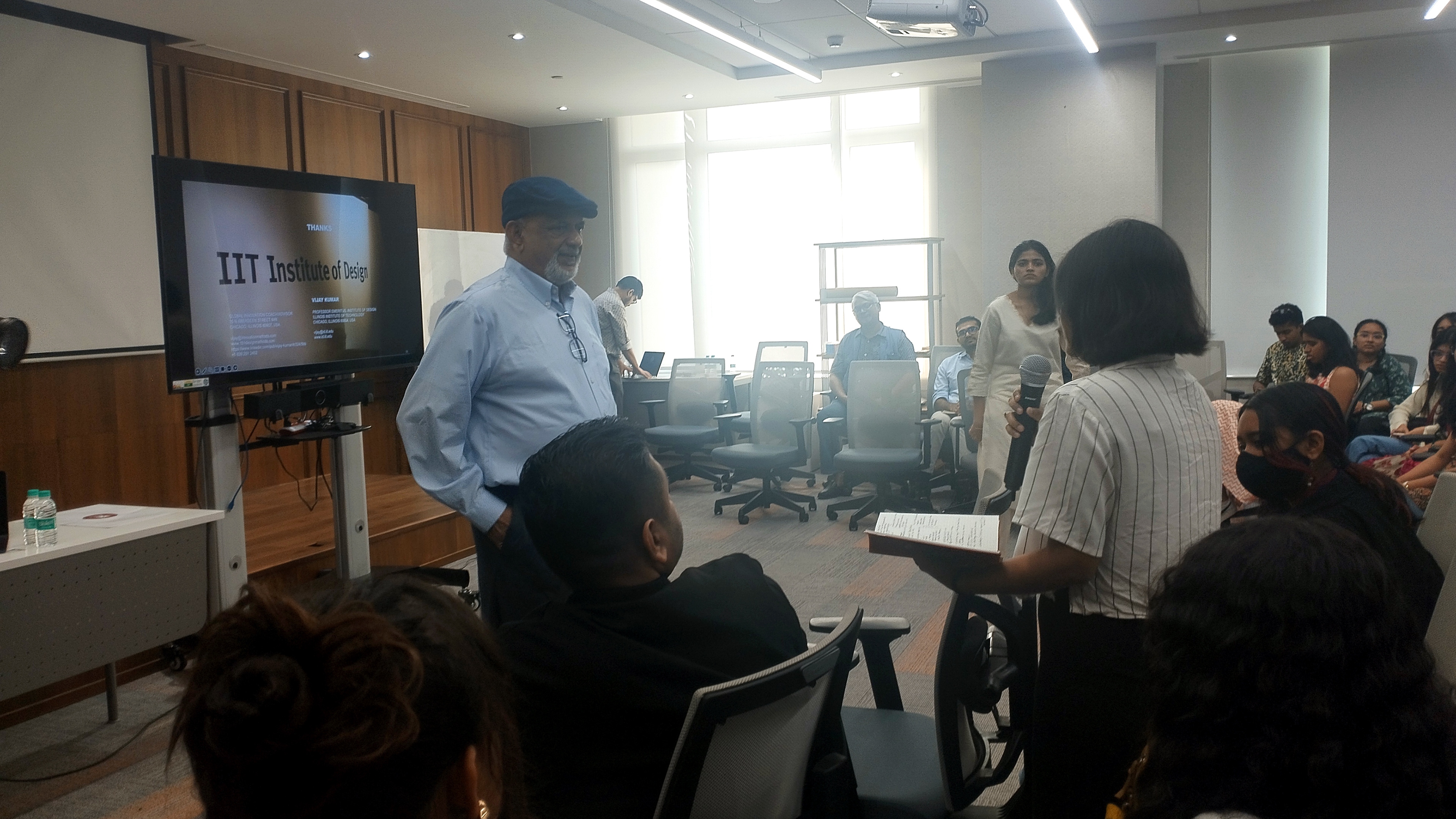


6. Award ceremony and closure
The Lift-off week concluded with students voting for the best works, followed by an award ceremony.
The Lift-off week concluded with students voting for the best works, followed by an award ceremony.
Further, the Faculty team gave an overview of the academic courses, activities and timeline of the semester.
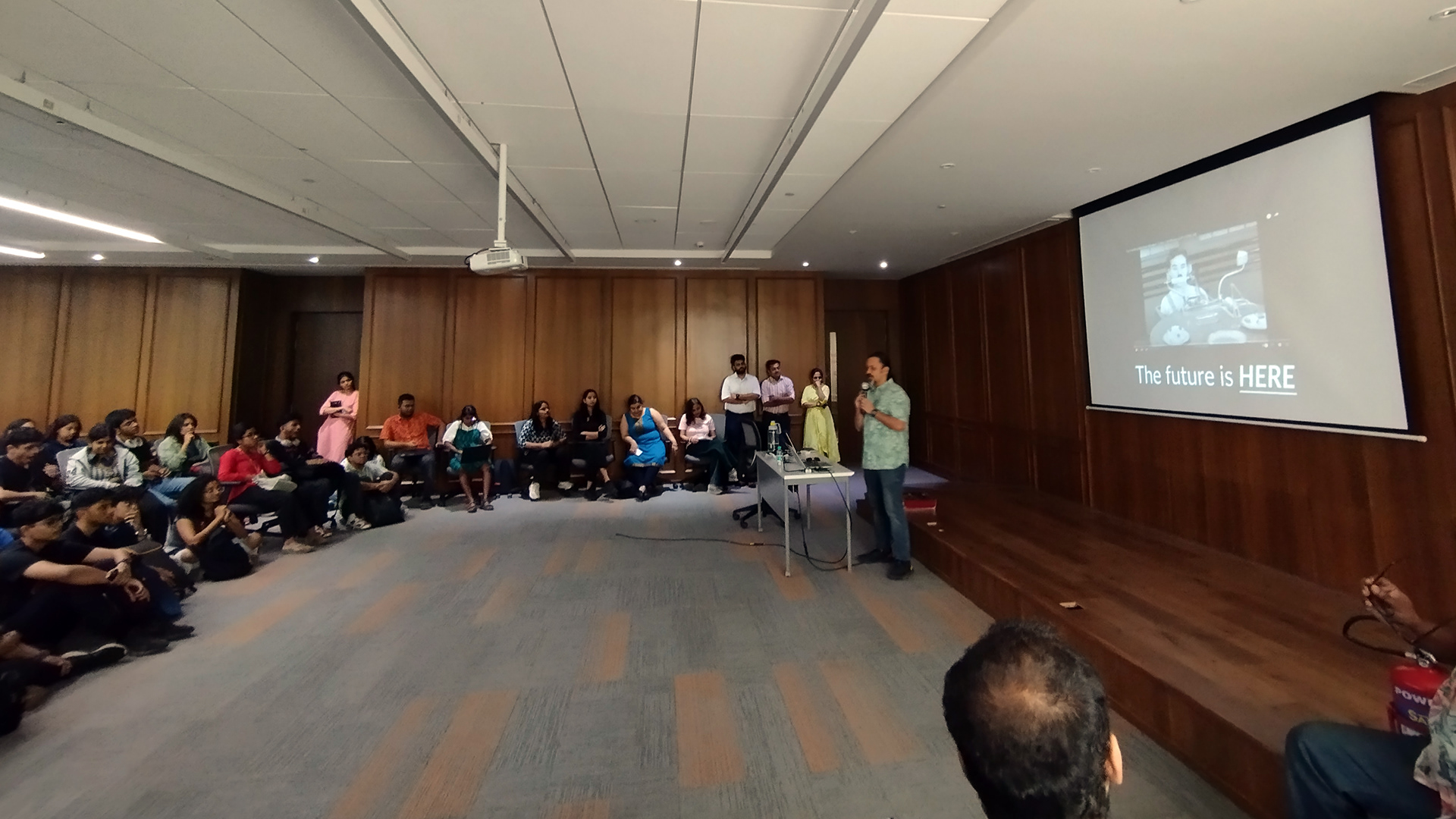
CONCLUSION AND OUTCOME
Design students learned several key aspects of speculative design through workshops, hackathons, lectures and exhibitions.
1. Critical Thinking: Speculative design encouraged students to question current systems and imagine alternative futures.
2. Creative Problem-Solving: Hackathons pushed students to develop innovative solutions to hypothetical scenarios under time constraints.
3. Interdisciplinary Collaboration: Working with peers who engaged with different workshops enhanced the creative outcomes and collaboration ability of students.
4. Prototyping Futures: Exhibiting their work helped students present complex ideas and receive feedback.
5. Narrative Building: Students learned to create compelling stories around possible futures, linking design with social and technological change.
Design students learned several key aspects of speculative design through workshops, hackathons, lectures and exhibitions.
1. Critical Thinking: Speculative design encouraged students to question current systems and imagine alternative futures.
2. Creative Problem-Solving: Hackathons pushed students to develop innovative solutions to hypothetical scenarios under time constraints.
3. Interdisciplinary Collaboration: Working with peers who engaged with different workshops enhanced the creative outcomes and collaboration ability of students.
4. Prototyping Futures: Exhibiting their work helped students present complex ideas and receive feedback.
5. Narrative Building: Students learned to create compelling stories around possible futures, linking design with social and technological change.
Browse portfolio:
